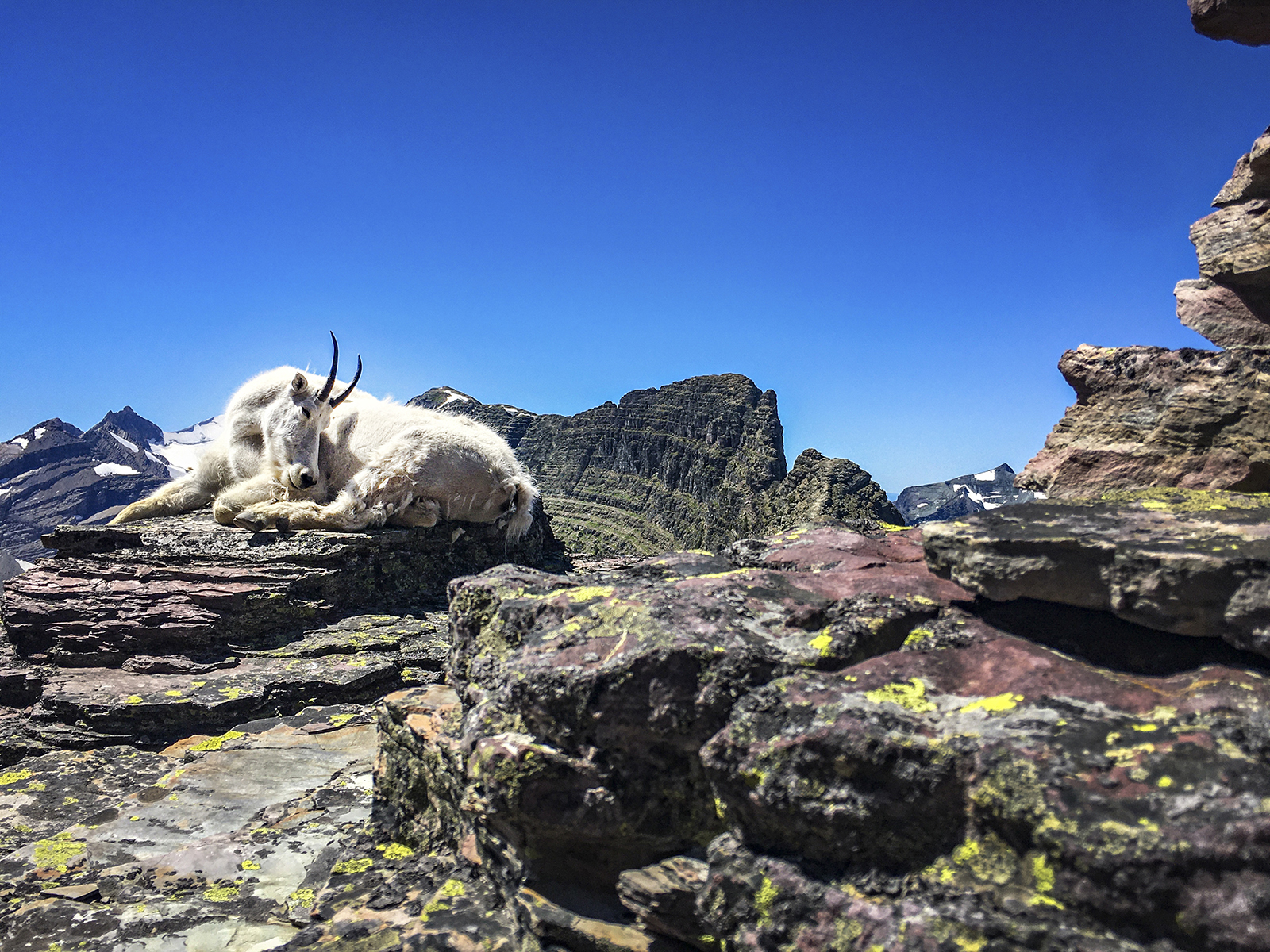
Glacier National Park Science Corner
Full-time researchers and volunteer citizen scientists are key to understanding the natural workings around Glacier
For nearly 20 years, Glacier National Park has hosted the Citizen Science Program, coordinated by the Crown of the Continent Research Learning Center, which partners volunteers with researchers to collect vast quantities of data in and around the park. Utilizing individuals interested in contributing to the trove of scientific research that occurs on public lands each year allows park staff to greatly increase the impact of its studies — many hands make light work after all. There are currently multiple long-term studies underway that members of the public can participate in each year.
(Un)Common Loon Research
In 1988, a single day statewide survey of loons indicated that Glacier National Park was home to roughly 20% of Montana’s breeding common loons. The species, identified by their black and white patterned feathers and eerie trilling cry, is listed as a Species of Concern in the state.
In 2023, 11 of the 49 loon chicks spotted by researchers in Montana were hatched in Glacier. Over the course of the summer, 83 volunteers spent 3,275 hours conducting surveys of loons in the wild. An additional 29 one-hour surveys were conducted on the nearby Blackfeet Reservation. Beginning in early May, volunteers look for loon pairs that display potential nesting behaviors. As the season progresses, volunteers watch for signs of hatching chicks, which usually peaks in mid-June and ultimately provides a snapshot of the lakes in the region that are considered successful breeding grounds.
Providing this long-term dataset helps park staff strategize recreation management and infrastructure development to minimize nest disturbances, while allowing wildlife managers to track population numbers, nest success, and habitat changes. The 2023 surveys showed the Crown of the Continent is home to 21 pairs of loons, 11 single adult loons and 11 chicks.
Counting Goats
One of Glacier’s most iconic fauna is the mountain goat, often seen tenuously perched high overhead on the edge of a rocky cliff. The species is adapted to high alpine ecosystems, which are increasingly vulnerable to climate change. In addition, growth in Glacier’s visitation has led to increased instances of habituation among resident goats and changes to their behavior.
Last year, 99 volunteers spent 3,521 hours at dozens of survey locations throughout the park, including several remote backcountry locations. The goal is to get three surveys completed at each site to determine a rough population estimate. Based on 2023 data, there is a minimum population of 194 mountain goats in the park, down from an estimated 255 in 2009.
In addition to spotting goats with binoculars and scopes, pellet collection has been used in past years for genetic analysis of the individual goats, as well to analyze diet composition.

Mount Brown Hawk Watch
Every fall millions of raptors — hawks, eagles, and falcons — migrate from Canada through the heart of the Rocky Mountains to the southern states. For the golden eagle, that migration route sends the large raptors winging directly through Glacier National Park.
About three-quarters of the way up Mount Brown, park biologists established a hawk watch site in 2018, part of a global network of locations that collects data on migrating raptors during September and October. On a single day last fall, observers spotted 160 golden eagles passing below Mount Brown. In 2022, 2,128 eagles were spotted over two months.
Interested birders are welcome to join the hawk watch site any day during the fall, ideally equipped with their own binoculars. A Hawk Watch Open House is scheduled for October 12 at Lake McDonald Lodge and will feature presentations by researchers, live raptors and the chance to add to the count.
Pika Pellet Patrol
Pikas are diminutive mammals distantly related to rabbits. They have evolved to live in cold climates such as the talus slopes in Glacier’s alpine regions. With thick coats and high metabolism, pikas can keep their body temperature at 104°F, but can experience fatal stress under warming conditions.
In 2008, park citizen scientists began monitoring pikas, and launched a limited Pika Pellet Patrol Project in 2021, before expanding it last year. Teams of researchers partnering with the U.S. Forest Service collected 204 pellet samples, working to determine location and population changes from surveys done two decades ago. In nearly half of the talus patches and mountain ranges volunteers surveyed, pikas were seen or heard.
Citizen scientists are asked to commit to completing at least three surveys for the park each season. If you are interested in becoming a citizen scientist at Glacier National Park, visit www.nps.gov/rlc/crown/citizen-science.htm
Spotlight Event: Science and History Day
Waterton-Glacier Science and History Day is an in-person even highlighting current research and historical topic related to Waterton-Glacier International Peace Park. Previous presentations have included presentations on wildfires, Canada Lynx surveys, dark skies and more.
When: July 23, 2024, from 9:30 a.m.-3:30 p.m.
Where: Community Building in West Glacier
Cost: Free